Business process mapping is the most indispensable technique for performance improvement and technology innovation initiatives. More than just boxes and arrows, the process map reveals the “magic” and wisdom of how and why work gets done.
Sadly, too many professionals give process mapping short shrift. Here are 10 tips that will ensure process mapping helps you achieve full potential from your improvement/innovation project.
1. Start with the big picture in mind
It is human nature: Our first instinct for problem-solving is to get under the hood and start fixing things. Resist that temptation! A “systems thinking” approach will help you clarify objectives, understand the business environment, and identify external root causes, customer gaps and stakeholders. We recommend the System Map to get your project off on the right foot
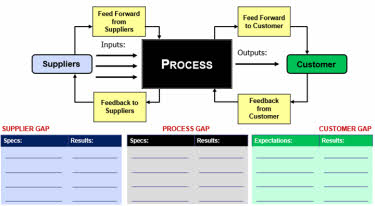
Like a SIPOC on steroids, the System Map defines the environment in which a process exists before you open up the “black box.” |
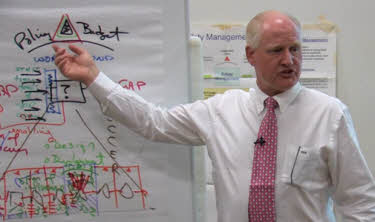
VIDEO: Bob Boehringer on the importance of systemic analysis prior to diving into process mapping /redesign. |
2. Get the right stakeholders in the room
The System Map from tip 1 will help you identify the full range of stakeholders from external suppliers to internal suppliers to process performers to internal and external customers. Also think about key decision-makers and influencers in your organization. A sublime process map is useless if users reject its lessons and recommendations.
3. Be clear on the business objective
There are several different reasons to employ process maps. Think of the acronym DRIVER – Diagnostics, Regulatory, Improvement/innovation, Value/cost analysis, Education, Redesign (automation or transformation). Your business goal will “drive” the selection of tools and techniques. For instance, a highly detailed value analysis chart would not be the right tool for new employee education or for an executive presentation.

VIDEO: Why map a process? DRIVER explained.
4. Do not skip as-is analysis
As a young programmer, I thought process mapping a nuisance. It was an extra step before I began developing my elegant solution. Later, I realized the process map helped me understand both "the what" and "the why" of my project. Decades later, I still hear the “skip the map” instinct coming out of the IT world. “You can skip the as-is process map because we are building an amazing new to-be.” This can be a fatal mistake. As-is process mapping reveals nuances, special customer considerations and exceptions that must be evaluated prior to either automation or transformation. Skipping as-is analysis undermines any effort to deliver accurate business requirements.
5. Choose the right technique
Technical geeks like myself can get caught up arguing between standards (BPMN vs. UML). When working with business professionals, I tend to use simple 20th Century techniques that are most effective for communication. For instance, a rectangle for an operation and a diamond for a decision point. Even with that simple notation, there are different types of maps and charts to choose from depending upon your DRIVER. If the goal is regulatory compliance or education, techniques like the top-down flowchart and cross-functional (swim lane) process map are most useful. If, on the other hand, the goal is to reduce cycle time or eliminate non-value-added steps, then techniques like the physical workflow (spaghetti) chart or the value analysis table are a better fit.
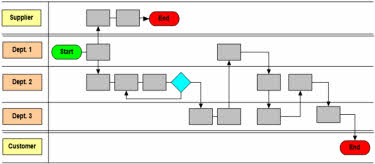
The cross-functional or swim lane chart: The quintessential process map. It tracks the logical flow of work, showing who does what. |
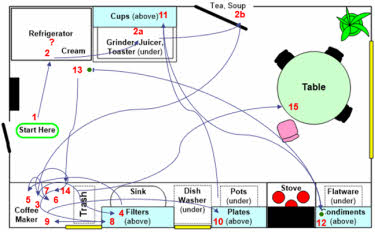
Physical workflow or spaghetti chart. |
6. Look for measurement opportunities
Since the goal of a business process mapping initiative is most often to improve performance, measurement identification is a helpful by-product. Mapping reveals upstream “pulse points.” These are places in the workflow where rework may be required, handoff delays may occur, or inspections take place. It is easy to set the customer goal. Determining which upstream activities have the most impact on that goal is a critical process improvement outcome. Metrics identified during process mapping will give you a head start.

Mapping reveals potential upstream or lead measures.
7. Start with old-fashioned paper and post-its, if possible
In the post-COVID-19 world, group meetings may be less common. If you can get your stakeholders together, it is best to do process mapping on the walls of a big conference room. This maximizes engagement, team dynamics and brainstorming. Post-its and markers are high-touch tools that foster synergy. If distance or policy prevent you from gathering the team in one place, online meetings are a reasonable alternative. If you want to use a process mapping software, then find one that allows for real-time collaboration (e.g. Lucidchart). Some applications allow you to “collaborate” one at a time. This is version control, not collaboration.
8. Choose the right software tool
Eventually, you must leave the conference room. The process mapping work products are great not just for problem-solving but for ongoing communication, engagement, knowledge management and process improvement. Your choice of software for storage and sharing is critically important. If you choose a medium that is not readily accessible and easy to use, then you might as well have process maps printed out and placed in a dusty binder on the shelf.
Once again, consider your DRIVER. If you anticipate maps being used by frontline staff to learn the “how to” and to provide feedback to colleagues or process owners, then a product like Nintex Promapp may fit the bill. If you are driving toward automation, then IBM Blueworks or Signavio will be a better fit. If the maps are tools for your internal process experts (e.g. Green Belts), then Signavio or interfacing may work best. These are just a few examples. There are other good products available.
9. Validate and Socialize
Process validation is one of the most important steps in a mapping project. Too few consultants make the time investment. It is almost impossible to create a 100% accurate process map on the first pass, especially if not every stakeholder can be in the room. Process validation enables all the team members and all the other stakeholders to review the work product and suggest changes. This not only improves accuracy, it drives engagement and buy-in.
Very often, stakeholders who were not in the room for as-is or to-be process mapping are suspicious of the outputs. It’s human nature. People don’t like to be “changed.” Giving those folks a chance to recommend corrections and add their own nuances and wisdom to the work product ultimately reduces resistance to your process and technology changes.
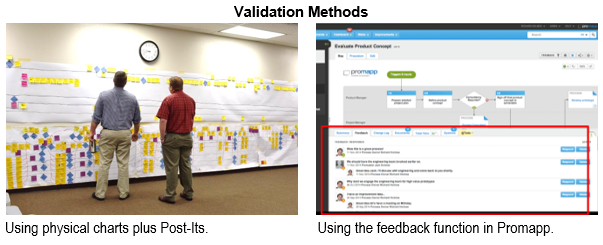
10. Look to improve and innovate
When you travel from as-is to to-be, there are two potential destinations. The “should be” state is the version of to-be in which the current process is executed with all cylinders firing. There is no waste or rework. Employees have the skills, materials and policies they need to efficiently deliver value to the customer. This is usually sufficient to achieve the business goal.
The other destination is your “could be” state. This is the version of to-be in which technology has been leveraged to design a new process. Since a “could be” solution requires more capital (financial, political, time), the resulting performance improvement must deliver a significant ROI for the business.
Look for both opportunities as you analyze your processes. That way you will get rapid payback from “should be” quick hits and you will have a roadmap for the longer-term dramatic impact of your “could be” business process.
CONCLUSION
The comprehensive business process management (BPM) toolkit contains many complex analysis techniques from Six Sigma, Lean, Reengineering, Theory of Constraints, etc. However, they all depend on one of the simplest techniques –business process mapping– to lay the foundation for success. Do not shortchange your mapping efforts.
- Start with the big picture in mind. This is a business exercise, not just a technical project.
- Make sure you have the full range of stakeholders to capture critical knowledge and to define realistic solutions.
- Use process maps to drive engagement, during and after the project.
Process maps should be the language of your business that is used to onboard employees, share improvement ideas, and maintain best practices.

Author: Paul King, Founding Partner, Orion Development Group
Paul King, founder of Orion Development Group, has dedicated the last three decades of his career to helping companies leverage their business processes to achieve dramatic, sustainable success. Mr. King works with universities to spread the process gospel via training. He holds a B.S. in Computer Science.